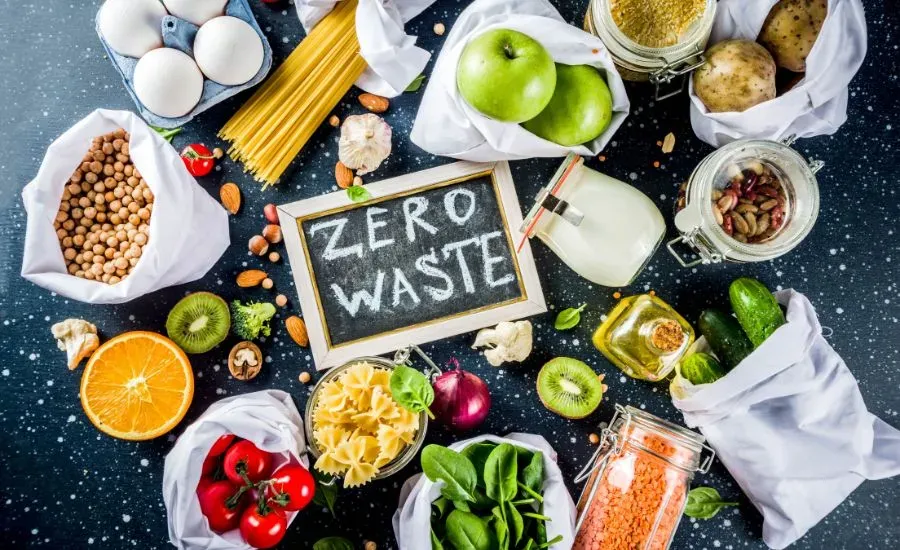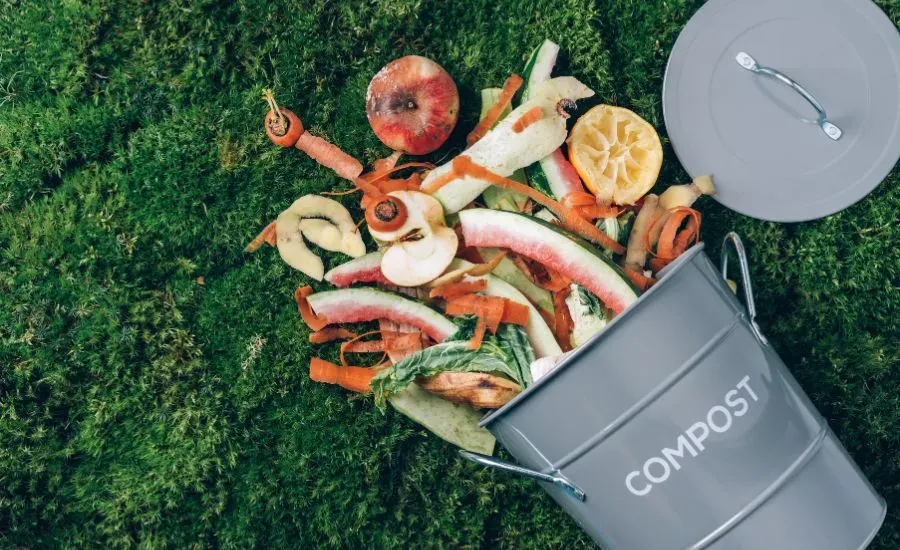
Reducing Food Waste: How Small Steps Can Make a Big Difference
Did you know that approximately 1.3 billion tons of food is wasted globally every year?
According to the World Counts statistics, the world loses an astounding quantity of food yearly. It is mind-blowing to think that a third of all food for human consumption is lost or wasted. 1.3 billion tons of food suitable for human consumption and 1.6 billion tons of so-called “primary product equivalents” are lost or wasted. That's a staggering amount that impacts not only the environment but our wallets as well.
Food waste is a problem in itself in a world where over 800 million people suffer from hunger and undernourishment. Less than a quarter of the food lost or wasted in the US and Europe could feed all these people.
With the current global food crisis and the increasing importance of sustainability, it has become imperative for individuals, families, and communities to take severe action and modify their lifestyle choices in order to minimize the food waste rate.
Reducing food waste can have a positive impact on our personal finances in addition to the environmental benefits. By utilizing all the food we purchase, we can cut down on unnecessary spending and stretch our budgets further.
The problem of food waste
Food waste is a global issue with significant environmental, economic, and social implications. According to the Food and Agriculture Organization of the United Nations (FAO), approximately 1.3 billion tons of food is wasted globally every year, equivalent to one-third of the total food production for human consumption. This shocking amount of waste represents a massive loss of resources and contributes to the depletion of natural resources, greenhouse gas emissions, and worsening food insecurity.
The problem of food waste is particularly prevalent in developed countries, where consumer behavior, inefficient supply chains, and lack of awareness contribute to the issue. Households are responsible for a significant portion of food waste, with estimates suggesting that up to 60% of food waste occurs at the consumer level. This waste can be attributed to factors such as purchasing more food than is needed, improper storage, and a lack of understanding about food expiration dates and proper food preparation.

Moreover, the problem of food waste is not limited to households; it also occurs at various stages of the food supply chain, including production, processing, distribution, and retail. Inefficient practices, poor planning, and a lack of stakeholder coordination can lead to significant food waste. For example, farmers may be unable to sell all of their produce due to aesthetic standards or oversupply, while retailers may discard unsold items due to strict expiration dates or cosmetic imperfections.
Environmental impact
The environmental impact of food waste is a significant concern, as it contributes to the shortage of natural resources, greenhouse gas emissions, and the degradation of ecosystems. When food is wasted, all the resources used in its production, such as land, water, energy, and labor, are also wasted. This has a direct impact on the environment, as the production of food is a major contributor to climate change, water scarcity, and soil degradation.
Furthermore, when food waste ends up in landfills, it decomposes and releases methane, a potent greenhouse gas that is much more harmful to the environment than carbon dioxide. Methane is responsible for approximately 25% of the global warming we are experiencing today. By reducing food waste, we can significantly reduce greenhouse gas emissions and mitigate the impact of climate change.
Economic consequences
The economic impact of food waste is also significant, both at the individual and societal levels. At the individual level, food waste represents a direct loss of money for consumers, as they are paying for food that ultimately ends up in the trash. This can significantly hit household budgets, especially for low-income families who may already be struggling to make ends meet.
At the societal level, the economic impact of food waste is even more profound. The cost of producing, processing, transporting, and disposing of food that is ultimately wasted is estimated to be in the billions of dollars globally. This represents a significant drain on the global economy and diverts resources away from more productive uses.
Understanding the causes of food waste

To effectively address the problem of food waste, it is important to understand the root causes of the issue. There are several factors that contribute to the high levels of food waste observed globally, including:
- Consumer behavior: As mentioned earlier, consumer behavior is a major driver of food waste, with factors such as purchasing more food than is needed, improper storage, and a lack of understanding about food expiration dates leading to significant waste at the household level.
- Supply chain inefficiencies: Inefficiencies in the food supply chain, such as poor planning, lack of coordination among stakeholders, and strict cosmetic standards, can result in significant food waste at the production, processing, and retail stages.
- Lack of awareness and education: Many people are unaware of the extent of the food waste problem and its impact on the environment and the economy. This lack of awareness can lead to complacency and a failure to take action to reduce food waste.
- Lack of infrastructure and technology: In some regions, the lack of proper storage, transportation, and waste management infrastructure can contribute to food waste. Additionally, the absence of innovative technologies to extend the shelf life of food or repurpose waste can exacerbate the problem.
- Policy and regulatory barriers: In some cases, outdated or inflexible policies and regulations, such as strict expiration date requirements or restrictions on the donation of unsold food, can inadvertently encourage food waste.
Small steps to reduce food waste at home
One of the most effective ways to reduce food waste is to take small, practical steps at the household level that can actually help and make a big difference in the amount of food we trash weekly:
Plan your meals and make a grocery list
Before going to the grocery store, take the time to plan your meals for the week and make a shopping list. This will help you avoid buying more food than you need, reducing the likelihood of waste. Meal planning is the critical factor that can reduce food waste because if you know what you are cooking, you know exactly what you need, and you adapt your grocery shopping accordingly.
Store food properly
Proper storage is key to extending the shelf life of food. Familiarize yourself with the best storage methods for different types of food, such as using airtight containers, refrigerating or freezing items, and rotating stock to ensure the oldest items are used first. If you do a simple Google search, you will understand the basics of proper food storage better, and you will be able to store food without throwing it away.
Understand expiration dates
Many people misunderstand the difference between "best before" and "use by" dates, leading to the premature disposal of perfectly good food. Learn to interpret these dates and use your senses (smell, sight, and touch) to determine if a food item is still safe to consume. For instance, “best before” suggests that the product will likely be at its best quality before the specified date. However, it doesn't mean it's unsafe to consume after that date. The product might still be edible, but it could have lost some flavor, texture, or nutritional value. On the other hand, “use by” is a more serious warning. To ensure safety, the product should be consumed before the specified date. After the "use by" date, there's a higher risk of foodborne illness due to spoilage or bacterial growth. Check the dates and use your food accordingly.
Utilize leftovers and scraps

Get creative with leftovers and food scraps to minimize waste. Turn them into soups, casseroles, or new dishes, or repurpose them as compost or animal feed. You can find amazing recipes with leftovers that are easy to make and the ideal money-saver solution to your lunch break. Also, you can freeze meat leftovers and use them in the future for similar dishes. Do research on what you can freeze and what not and start repurposing your food.
Innovations and technologies for reducing food waste
Technological innovations and advancements are playing a significant role in the fight against food waste. Here are some examples of innovative solutions that can help reduce food waste:
- Smart packaging and labeling: New packaging technologies, such as intelligent labels and sensors, can help extend the shelf life of food by providing real-time information on freshness and expiration dates. This can help consumers make more informed decisions about when to consume their food.
- Food waste detection and tracking: Innovative technologies, such as AI-powered sensors and computer vision, can help businesses and households better track and monitor their food waste, enabling them to identify areas for improvement and measure the impact of their waste reduction efforts.
- Food waste-to-energy and composting: Advances in waste-to-energy and composting technologies are converting food waste into valuable resources, such as biogas, fertilizers, and soil amendments, reducing the amount of waste that ends up in landfills.
- Online food sharing platforms: Digital platforms that connect individuals and businesses with surplus food to those in need are making it easier to redistribute and repurpose food that would otherwise go to waste.
- Improved storage and preservation: Innovative storage solutions, such as smart refrigerators and freezers, can help extend food's shelf life by maintaining optimal temperature and humidity levels, reducing the likelihood of spoilage.
- Precision agriculture and supply chain optimization: Advancements in precision agriculture, data analytics, and supply chain management technologies are helping businesses optimize their operations, reduce waste, and improve the efficiency of food production and distribution.
The role of food banks and organizations
Food banks and other charitable organizations play a vital role in reducing food waste and addressing food insecurity. These organizations work to recover and redistribute surplus food that would otherwise end up in landfills, providing it to individuals and families in need.
- Food recovery and redistribution: Food banks and organizations partner with businesses, farmers, and retailers to collect and distribute surplus food that is still safe for consumption. This not only reduces waste but also helps to alleviate hunger and food insecurity in local communities.
- Education and awareness: Many food banks and organizations also focus on educating the public about the importance of reducing food waste and providing practical tips and resources to help individuals and businesses do so. This can include hosting workshops, developing educational materials, and engaging in advocacy efforts.
- Policy and advocacy: Food banks and organizations often advocate for policy changes and government initiatives that support food waste reduction and food security. This can include pushing for legislation that incentivizes food donation, improving infrastructure for food recovery and distribution, and addressing systemic issues contributing to food waste.
- Innovation and collaboration: Some food banks and organizations are also exploring innovative solutions to reduce food waste, such as developing new technologies for food processing and preservation or partnering with businesses and researchers to develop comprehensive strategies for waste reduction.
- Community engagement: Food banks and organizations are crucial in engaging local communities and fostering a sense of collective responsibility for reducing food waste. By mobilizing volunteers, hosting community events, and building partnerships with local businesses and organizations, they can inspire and empower people to take action.
Reducing food waste is not a straightforward and one-dimensional issue; it is a complex challenge that requires a multi-faceted approach involving individuals, organizations, and governments. Ultimately, reducing food waste is not just about saving money or protecting the environment; it's about building a more equitable and sustainable future for all. By working together, we can create a world where no edible food goes to waste and where everyone has access to the nourishment they need to thrive.






